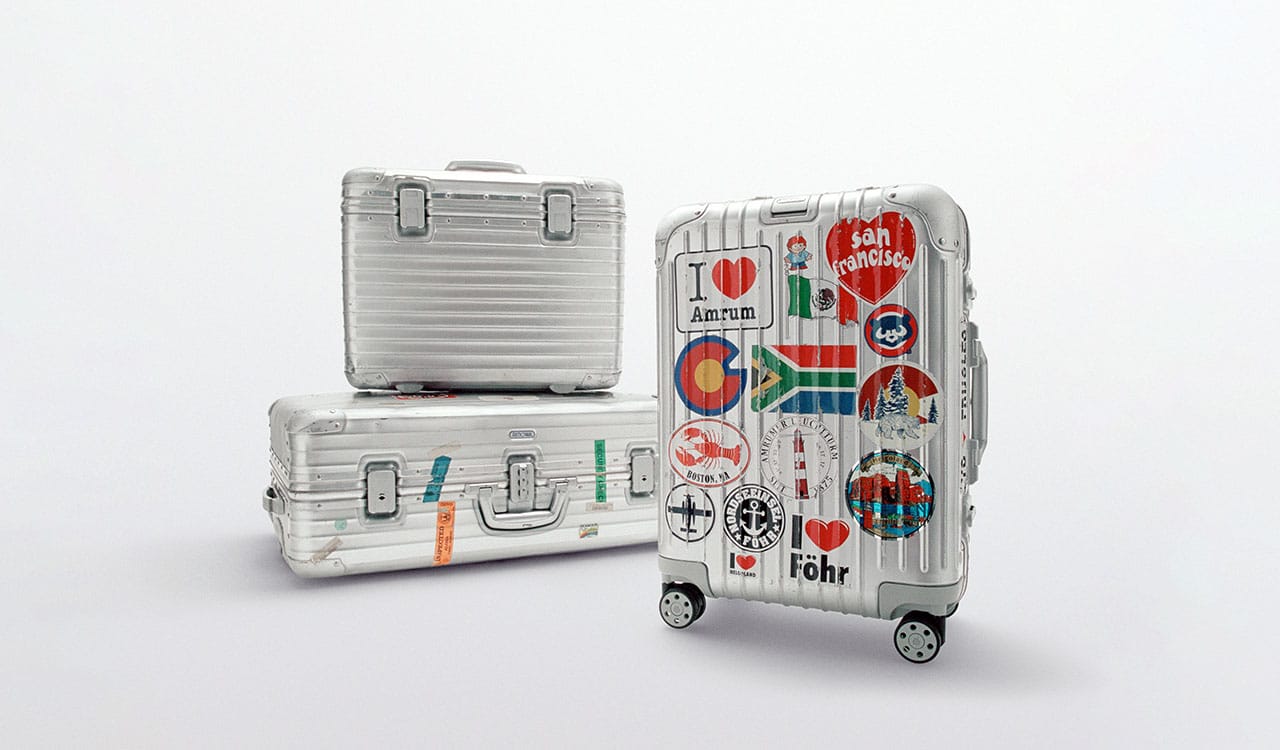Under the scorching sun of Accra, Ghana’s bustling capital, the second-hand clothing markets pulse with energy. Traders negotiate over towering bales of garments arriving daily from Europe, North America, and Dubai, their contents spilling onto makeshift tables and dusty roads. Some of these clothes will journey across the vast expanses of Ghana’s hinterlands; others will be sent by container trucks and pick-ups as far as neighboring Burkina Faso or Côte d’Ivoire. But the majority will flood into Kantamanto Market, which was until a recent fire razed nearly two-thirds of it, West Africa’s largest second-hand clothing hub—a sprawling maze of thousands of retailers and wooden stalls, many overflowing with the West’s discarded fashion waste.
Locally known as “obroni wawu”—Twi for “dead white man’s clothes”—discarded garments, once seen as charitable donations, have become part of a vast and troubling global trade. Beneath the market’s chaotic vibrancy, a darker truth unfolds: Much of the clothing is unsellable, fueling an escalating textile waste crisis that is suffocating Ghana’s environment.
Second-Hand Overflow
Locally known as “obroni wawu”—Twi for “dead white man’s clothes”—these garments, once seen as charitable donations, have become part of a vast and troubling global trade. Beneath the market’s chaotic vibrancy, a darker truth unfolds: Much of the clothing is unsellable, fueling an escalating textile waste crisis that is suffocating Ghana’s environment.
Peter McLaughlin, a fashion designer with a Harvard MS in sustainability, views markets like those in Ghana as undeniable proof that fast fashion is fundamentally incompatible with global sustainability goals. “People don’t realize that only ten percent of the second-hand clothing they donate is actually resold,” McLaughlin told TRR. “A small percentage is then downcycled into insulation or stuffing for car seats etc., but the majority is shipped to the Global South, (to places like) Ghana.”
“Ghana is drowning in clothing, eradicating any local textile industry and choking the beaches and surrounding environment. The growing clothing landfill is a growing hazard, particularly with fires at the market and the dumps releasing toxic chemicals used within the clothing production process,” added McLaughlin.
Kantamanto market has long been a vital hub for reuse, repair, upcycling, and remanufacturing, sustaining the livelihoods of a 30,000-strong network. However, the market is now overwhelmed with more clothing than it can manage. The waste spilling out of Kantamanto is a stark warning—exposing fast fashion’s reckless overproduction and the industry’s systemic reliance on volume over value.
The Business of Second-Hand Clothing
The global second-hand clothing trade is enormous. Every year, millions of tons of used clothing are exported to developing countries, with West Africa being a primary recipient. Ghana alone imports around 15 million items of used clothing each week, but nearly 40 percent of these garments are immediately discarded because they are too damaged or poor in quality to resell.
The influx of cheap, low-quality clothing has been fueled by the fast fashion industry, which has seen exponential growth in the last two decades. Retailers such as H&M, Zara, and Shein churn out low-cost, trendy apparel at an unprecedented rate, leading to a culture of disposability where consumers in wealthier nations frequently discard garments after only a few wearings. In North America and Europe, organizations like Goodwill and the Salvation Army collect used clothing donations, but a significant portion of these items are shipped overseas instead of being sold locally. These organizations often engage in the second-hand clothing trade to generate cash for their charitable projects.
A Continent-Wide Crisis
Ghana is not alone in bearing the brunt of the second-hand clothing glut. Across Africa, countries including Kenya, Nigeria, and Tanzania have also been overwhelmed by textile waste. In Kenya’s Gikomba Market—another one of Africa’s largest second-hand clothing hubs—the crisis mirrors that of Ghana with traders struggling to offload massive volumes of low-quality, unsellable garments, many of which end up as waste. According to the UN Environment Programme, Africa receives an estimated 4 million tons of used clothing annually, with significant portions ending up in landfills or clogging waterways.
The scale of this crisis is exacerbated by local weak waste management systems, a lack of recycling infrastructure, and an overreliance on imported clothing. Many of these garments—made from synthetic materials like polyester—do not biodegrade, creating long-term environmental hazards. In response, some governments have attempted to curb imports through tariffs or outright bans, such as Rwanda’s 2016 decision to phase out second-hand clothing to protect its domestic textile industry. However, such policies often face pushback from major exporters like the U.S. and the EU, whose economies benefit from the second-hand trade. Without large-scale interventions—including regulatory reforms, investment in textile recycling, and a shift toward circular fashion models. Africa is the undisputed dumping ground for fast fashion waste.
Meanwhile, fast fashion’s relentless expansion has only worsened the problem. The industry was valued at $103 billion in 2022 and is projected to reach $291 billion by 2032, growing at a compound annual growth rate (CAGR) of 10.7 percent. Brands like Shein have thrived by leveraging ultra-fast production cycles, while H&M and Zara continue to dominate with aggressive business models that prioritize volume over sustainability.
Ghana’s Fast Fashion Landfill Crisis: An Environmental Catastrophe
For Ghanaian authorities, the situation is dire. The country lacks the infrastructure to handle the sheer volume of textile waste arriving weekly. Most of the discarded clothing ends up in informal dumpsites or, worse, directly in the ocean. At the Kpone landfill near Accra, towering piles of synthetic fabrics—mostly polyester and other plastic-based materials—smolder under the scorching heat, releasing toxic fumes and leaching hazardous chemicals into the environment.
Worse still, these landfills pose a severe threat to Ghana’s water supply. Many synthetic textiles contain per- and polyfluoroalkyl substances (PFAS)—commonly referred to as “forever chemicals” which leach into groundwater and rivers. PFAS exposure has been linked to cancer, immune system suppression, and hormonal disruptions.
“The U.S. and E.U. are only now beginning to grapple with the calamitous health consequences of letting PFAS recirculate into the food supply and water table. Now imagine the impact of these chemicals in places with far fewer resources and little to no infrastructure to treat them,” said Michelle Bellanca, CEO of Minneapolis-based Claros Technologies, a company specializing in capturing and destroying PFAS from waste streams. “In the U.S., regulators and manufacturers are only beginning to tackle this crisis. But across much of the developing world, PFAS mitigation isn’t even on the radar—a heartbreaking reality, especially when cost-effective solutions already exist.”
PFAS isn’t the only concern. Studies have found alarming levels of heavy metals and microplastics in the soil surrounding Ghana’s clothing landfills, raising additional serious questions about food safety and the long-term health effects on local communities. As these contaminants seep into agricultural land and water sources, they pose a growing and largely unchecked public health risk.
Behavior Modification
The sheer scale of the problem demands urgent action from multiple stakeholders. Ross Lohr, co-founder of Scrappy Socks and a leading voice in the fight against fast fashion, emphasized the need for systemic change. Speaking to TRR, he stated, “The fast fashion problem starts with changing how we value clothes and where they come from—and that means investing in localized circular economies that bring textile production back to the U.S.”
Tina Bhojwani, founder and CEO of Aera, a 100 percent vegan luxury footwear brand, doesn’t hold back on the dark reality of fast fashion. “If consumers truly understood where their fast fashion purchases end up—piling up in toxic landfills across Africa and Southeast Asia—they might think twice,” she said. “The industry has long kept this hidden, but we have a duty to expose the devastating impact—not just on the planet, but on real lives.”
The Or Foundation, an Accra-based nonprofit, has launched Speak Volumes, a campaign demanding transparency in fashion’s overproduction crisis. Despite brands having easy access to production data, this crucial information remains hidden from the public. Speak Volumes pushes companies—especially those whose waste floods Ghana’s beaches—to disclose their production volumes, exposing the scale of the problem and driving accountability for the industry’s waste crisis.
Five Strategic Actions to Address the Fast Fashion Waste Crisis
There is a glimmer of hope. Here are five key actions the retail sector must take to combat the fast fashion waste crisis in places like Ghana. This bold, urgent plan calls for collective action from industry leaders, NGOs, regulators, lawmakers, and the media to drive meaningful, lasting change.
- Consumer Awareness and Education
Consumers in developed nations must be made acutely aware of the long-term environmental and social costs of their clothing consumption. Targeted public awareness campaigns, corporate sustainability initiatives, and educational programs should emphasize the consequences of fast fashion waste in developing countries. Integrating sustainability into school curricula, retail marketing, and influencer-driven advocacy can drive more responsible purchasing decisions. - Retailers Must Take Accountability
Major fashion brands—including H&M, Zara, and Shein—must take ownership of the full lifecycle of their products. This includes adopting circular economy models, investing in sustainable materials, reducing production volumes, and implementing large-scale take-back programs that ensure discarded garments are responsibly managed. Additionally, brands should be incentivized to design longer-lasting, repairable products rather than relying on disposable fashion cycles. - Stronger Global Regulations and Compliance
Governments must enforce stricter environmental and extended producer responsibility (EPR) regulations to hold retailers accountable for post-consumer textile waste. The EU’s Sustainable and Circular Textiles Strategy is an important step toward regulating fast fashion, requiring brands to meet sustainability benchmarks. Similar policies should be implemented in the U.S., Canada, and other major consumer markets, ensuring that retailers bear responsibility for their products’ end-of-life impact. According to The Or Foundation, Extended Producer Responsibility (EPR) policy is a crucial transitional measure for fostering circular and sustainable business models in the fashion industry. Additionally, it ensures that communities disproportionately affected by textile waste are provided with the necessary resources to effectively manage its impacts. - Investment in Recycling and Waste Management Infrastructure
Developing nations need substantial investment in advanced textile recycling and waste management facilities to mitigate the environmental damage caused by imported clothing waste. Currently, less than one percent of textiles is fully recycled into new garments. With the right funding and technology, nations like Ghana could convert textile waste into raw materials for new industries, creating jobs and reducing landfill overflow. Public-private partnerships, direct foreign investment, and technology transfers from developed nations will be critical in making this a reality. - Restricting Low-Quality Imports and Strengthening Local Industry Some African nations, like Rwanda, have implemented bans on second-hand clothing imports to protect domestic textile industries and reduce dependence on foreign waste. While controversial, such policies can help stimulate local textile production, increase job opportunities, and foster economic self-sufficiency. Governments should explore trade policies, tariffs, and quality-control measures to curb the influx of low-quality garments while promoting regional textile manufacturing as a viable alternative.
Rethinking Fast Fashion’s Global Footprint
Ghana’s landfills serve as a grim testament to the true cost of fast fashion—one that extends far beyond the checkout counter. What is often framed as a charitable effort to redistribute second-hand clothing has in reality been driven by the relentless pursuit of profit and a ‘NIMBY’ (“not in my backyard”) mentality that shifts the burden of waste onto the Global South. The result is a crisis of staggering proportions, where mountains of discarded textiles overwhelm landfills, leach toxic chemicals into water sources, and suffocate local economies.
If left unchecked, the toxic combination of overproduction, waste mismanagement, and environmental degradation will have irreversible consequences—not just for Ghana, but for the planet as a whole. The time for action is now. It begins with a fundamental reckoning in how we produce, consume, and dispose of our clothing. The fashion industry must be held accountable, and consumers must recognize that their purchasing habits have global repercussions.





